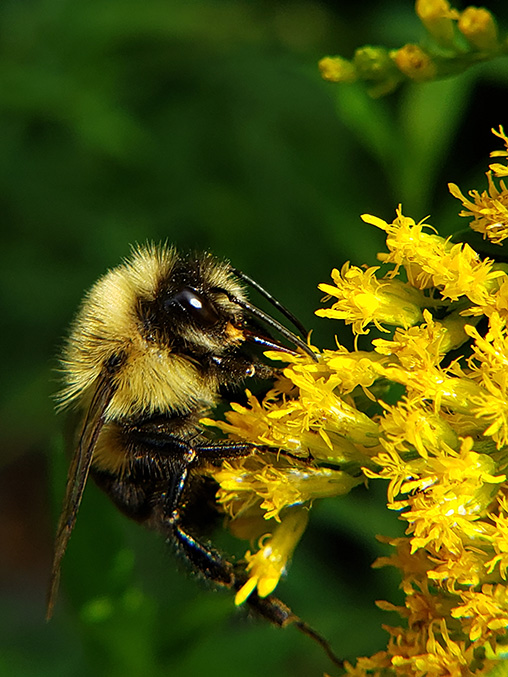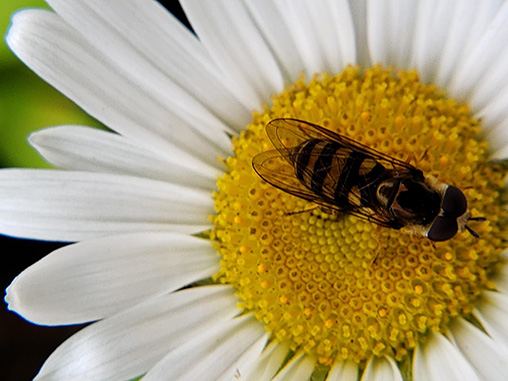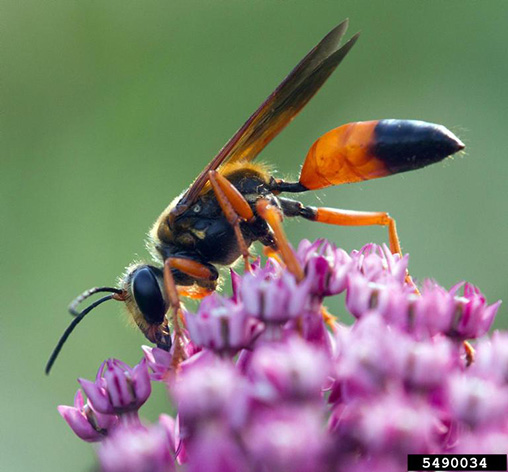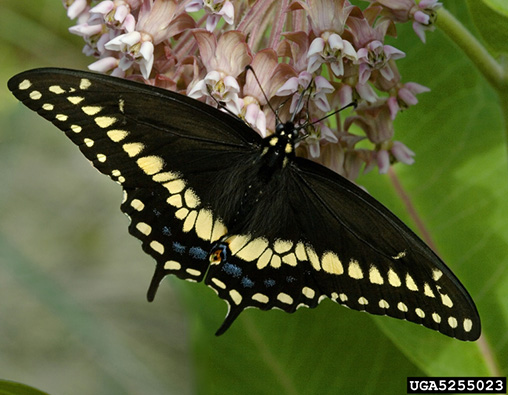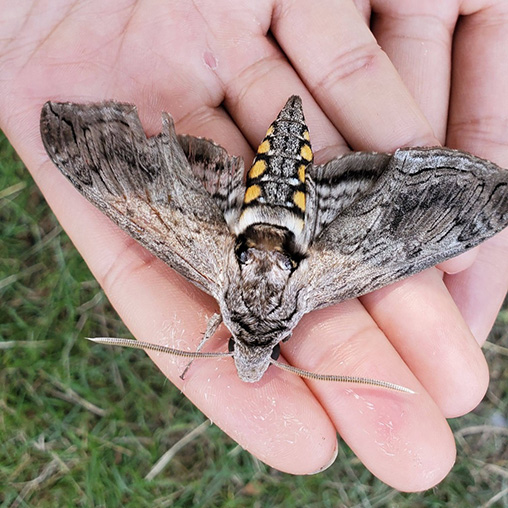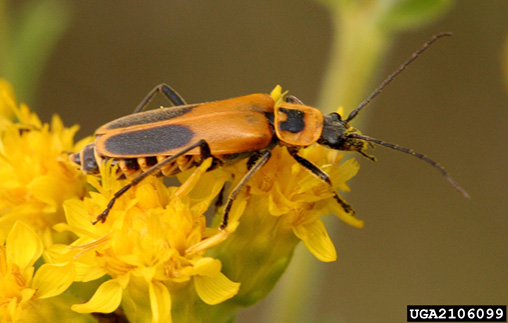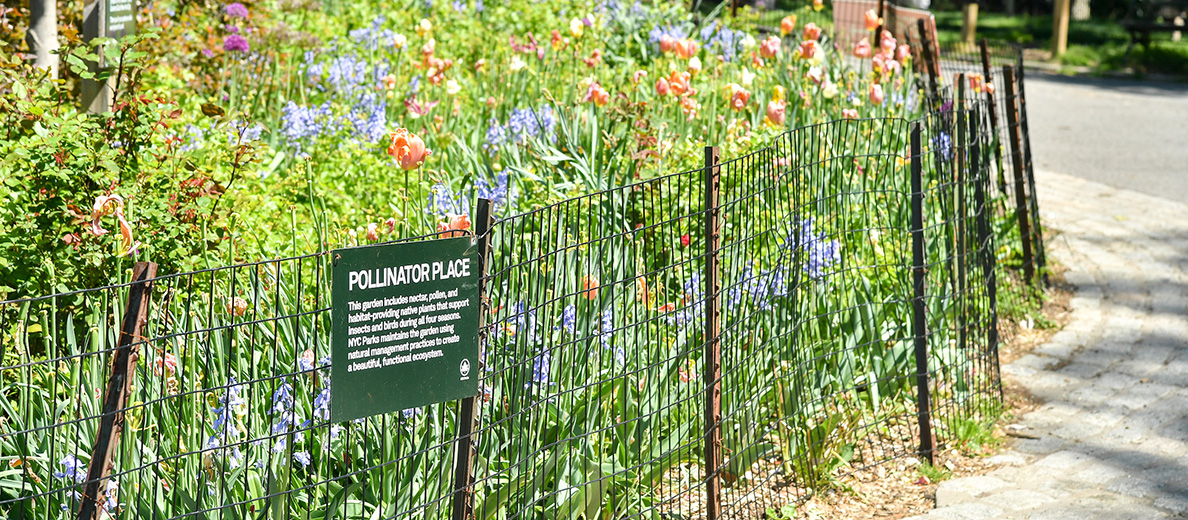Pollinators in New York City Parks: Bees, Butterflies, and Beyond

Pollinators are an essential part of New York City's ecosystem. They play an important role in growing our beautiful gardens, food, and our city's plant biodiversity as they transfer pollen from flower to flower. Explore their lives in our parks and the plants that they love, and how we're helping native and visiting pollinators thrive while they care for our city.
Benefits of Pollinators
- Worldwide, pollinators are necessary for the reproduction of over 85% of the earth’s flowering plants, including more than two-thirds of the world’s food crop species.
- Pollinators are also keystone species, meaning a species on which other species in an ecosystem largely depend. Fruits and seeds derived from insect pollination are a major part of the diet of approximately 25% of all birds and of many mammals worldwide.
Discover Pollinators in NYC Parks
Although birds, bats, and some reptiles can provide pollination services, the vast majority of plants are pollinated by insects. And, while bees are the most important pollinators from this group, flies, wasps, beetles, moths, and butterflies are also important for the pollination of many species of plants.
Meet some of the lesser-known pollinators that you might encounter while exploring the green spaces of New York City:
Bees
New York City is home to more than 200 species of bees. Studies show that bees account for approximately 68% of visits to flowers in New York City parks and residential neighborhoods. Native bees collect pollen from a wide variety of plants; however, some bees specialize in collecting pollen from one genus or species of flowering plants.
Brown Belted Bumble Bee
Bombus griseocollis
Season: April through September
These fuzzy bees have short, dense yellowish-greenish hairs on their thorax and a band of brown hairs on their abdomen.
- Buzz pollination happens when the bee grabs onto a flower and moves their flight muscles rapidly, causing the flower and anthers to vibrate, dislodging pollen.
- Bumblebees do not produce honey.
- They live in colonies. Each colony has a single female (the queen bee) that produces the offspring, and nonreproductive individuals cooperate in caring for the young. Bumble bee colonies consist of a queen bee, female worker bees, and male bees.
- Bumble bee colonies are annual. Queen bees hibernate through the winter and emerge in early spring to forage for nectar and pollen, find a nest, and start a new colony. First, the queen will produce sterile female workers who will tend to the developing larvae and forage food. Then, the queen will produce male bees and new queen bees. In the fall, once the new queens and male bees have mated, the old queen, female worker bees, and male bees die. The newly-mated queens will find a site to overwinter and establish a new colony next spring.
Favored Flora: Bumble bees are generalists pollinators, which means they can forage nectar and pollen from a wide variety of plants. Some species have very long tongues that enable them to sip nectar from plants that have long, tubular or spurred flowers such as native beardtongue, foxglove, Virginia bluebells and columbine.
Sightings: Belted bumble bees can be seen hunting for nectar in gardens and parks across the city.
Ligated Furrow Bees aka Mining or Sweat Bees
Halictus ligatus
Season: April through September, most active May through July
Halictus species are ground-nesting bees that sometimes sip sweat from humans, leading to their alternate common name of sweat bee. Many of the females will have scopa, which are long dense hairs on their hind legs for carrying pollen, but no males have scopa!
- Unlike the brown belted bumble bee, some Halictus species may establish a eusocial nest (or multi-generational nest). All females retain the ability to lay eggs, meaning that if the queen dies, a new female can take over egg-laying duties. Whether a eusocial nest is established appears to depend on the unpredictability or stability of the weather, with unpredictable weather leading to these eusocial behaviors.
Favored Flora: Look for Halictus ligatus, which is the most common Halictus species on plants in the Apiaceae (carrot), Allium (onion), and Asteraceae (aster) families
Sightings: These industrious, often pollen-covered, little bees are seen sometimes in window boxes and street-side planters, especially if there is a sunflower in there.
Leaf Cutter Bees
Megachile spp.
Season: April through October
The name Megachile means “large lipped” and is in reference to the gargantuan mandibles (or jaw) that are characteristic of this group of bees.
- Almost all Megachile line their nests with leaves or petals. The female rests on the edge of the leaf or petal and uses her huge jaw to cut the leaf to wrap around her body. She will then free-fall from the plant until she and her “blanket” can fly away to her nest.
- Some Megachile bees use a variety of leaves and petals, but some seem to specialize in certain materials only, such as Primula and tick trefoil.
Favored Flora: Most species seem to prefer rose, lilac, or redbud leaves, and you can often see evidence of their work in the form of small, circular holes on the edges of the leaves of these plant species.
Sightings: You can find these bees cutting material from rose bush leaves in many places throughout New York City. A great place to see them at work is near the Stonehenge in Clove Lakes Park.
Flies
Flies are the second-most important pollinators of native plants in NYC. Flies, especially syrphid, or flower flies, are responsible for one-third of the world’s pollination services. The larvae of many of these fly species are also voracious feeders that eat soft-bodied insects, like scale and aphid species, that are common pests in New York City. They passively transfer pollen while moving around the flowers and sipping on nectar.
Long-Tailed Aphid Eater Flies aka Syrphid or Flower Flies
Eupeodes americanus
Season: April through November
Unlike your usual houseflies, these flies are black to metallic green with three yellow bands on their abdomen. For this reason, they are often mistaken for bees, as they do have yellow/black or white/black markings, but unlike wasps or bees, they have short antenna, enormous fly-eyes, and only one pair of wings.
- These flies hover to detect predators, like ambush-spiders on flowers, but also to find individual aphids.
- Larvae are voracious eaters of arboreal aphids, but more generalist species can be found predating upon ground-layer aphids on shrubs and perennial plants.
Favored Flora: They are effective pollinators of strawberries, goldenrods, and many other native plants.
Sightings: You can see hoverflies almost anywhere! If there are flowers, there will be hoverflies. But they, like many New Yorkers, seem to really like Prospect Park and Central Park.
Wasps
Wasps are pollinators and often frequent flowers in search of nectar and/or insect prey. Some wasps are considered generalist pollinators and passively transfer pollen while feeding on nectar from various plants. While doing so, they often overlap with other pollinators, such as bees, flies, or butterflies. However, because they generally lack abundant body hairs and do not feed on pollen, they are considered less efficient pollinators than their bee relatives.
Golden Digger Wasp
Sphex ichneumoneus
Season: May through October
Golden digger wasps are hardy predatory wasps that frequent flowers and are very active throughout the day.
- A female golden digger wasp constructs as many as half a dozen nests.
- Upon capturing a suitable prey, the female will paralyze it with toxins in her sting. If the prey is small, she flies it directly to the nest. If the prey is too large to transport by air, the wasp will walk with it across the ground. After the female has dragged all her paralyzed prey into the nest hole, she lays one egg on each insect, placing it horizontally on the prey’s thorax. They hatch within two to three days and without moving, they begin to feed on the prey.
- These wasps are not aggressive unless handled, so should be left alone.
Favored Flora: Adult wasps subside on sap and a variety of flower nectars from flowering plants that blossom from May through October.
Sightings: These wasps are common in areas with suitable habitat throughout the city, like fields, meadows, and open spaces with sandy areas nearby. Van Cortlandt Park in the Bronx is a great place to see them.
Butterflies and Moths
Butterflies visit a variety of wildflowers during daylight hours, sipping on nectar to fuel their mating flights. While less efficient pollinators than bees, they still manage to move some pollen from plant to plant, usually via their wings. While butterflies account for less than 6% of flower visitors in New York City, the diversity of butterflies is quite high — at least 110 species were documented in a 50 km radius (about 31 miles) of the city from 2001 to 2010.
Moths are mostly nocturnal and tend to visit, and thus pollinate, flowers that are white and have strong fragrances that make them easy to find in low or no light conditions.
Black Swallowtail Butterfly
Papilio polyxenes
Season: May through August
The black swallowtail's look is very distinct. The body is black with rows of small white dots running down the length of its wings. Look a little closer and you'll notice that the smaller, black hindwings have a row of iridescent blue dots and each hindwing sports a bright orange and black eyespot at the bottom near the body. A long extension forms a "tail"on each wing.
- The swallowtail butterfly forms a chrysalis on a stem or branch and ties the chrysalis to that stem with a single strand of silk. It overwinters in the chrysalis, which turns from green to brown as it ages.
- Adults emerge from the chrysalis in spring and lay their eggs on plants in the carrot family. First brood adults will fly from mid-May until late June and second brood adults will fly from early July until late August.
Favored Flora: Caterpillars eat the leaves of plants in the carrot family such as dill, fennel, parsley and Queen Anne’s lace. Adults drink nectar from milkweeds, clover, and thistle.
Sightings: It is very common to see the caterpillars and adults in our many GreenThumb community gardens. They have also been seen happily feasting on nectar in Alley Pond Park.
Pandorus Sphinx Moth aka Hawk Moths
Eumorpha pandorus
Season: May through August
Pandorus Sphinx Moths are quite large for moths; some are even occasionally mistaken for small birds. In general, hawk moths are fast fliers and nocturnal. The Pandorus Sphinx Moth has a camouflage-like pattern with mottled green colors and earthy undertones.
- The Pandorus Sphinx Moth drinks nectar from many different flowers so it is likely to be found in gardens.
- This species is attracted to lights at night and is active from spring through fall. It enjoys warmer climates and is best viewed at dusk or dawn, when it is most active.
Favored Flora: It can be found eating grapes and grapevines as well as the leaves of Virginia creeper, a native vine. It also feeds on the leaves of the highly invasive porcelain berry vine.
Sightings: There have been multiple sightings in Brooklyn Bridge Park and around the LeFrak Center in Prospect Park.
Beetles
Beetles were among the first insects to evolve to visit flowers. They are especially important pollinators for ancient species such as magnolias and spicebush. Beetles will chew through petals and other floral parts to get to the nectar within. They often defecate within flowers, earning them the nickname “mess and soil” pollinators. While pollination by beetle is less common in New York City than by other insects, beetles do pollinate native magnolias, pond lilies, goldenrod, and spirea.
Goldenrod Soldier Beetle
Chauliognathus pensylvanicus
Season: August through September
Goldenrod soldier beetles have flexible wing covers called elytra and resemble fireflies, but they do not have light-producing organs.
- The flowers, besides providing nectar, are also a meeting place for finding mates. They do no long-term damage to the plants and do not bite or sting.
Favored Flora: They are often seen on goldenrod flowers, hence the common name, but they will also visit many other flowers, including yellow composites, Queen Anne’s lace, milkweed, rattlesnake master, and other late-summer flowering plants.
Sightings: If there is goldenrod around, these beetles will come! They seem to be especially visible in the natural areas of Staten Island, including Brookfield Park.
Challenges Faced by NYC's Pollinators
Unfortunately, in many places, the essential service of pollination is at risk from habitat loss and the loss of native host plants, pesticide use, and introduced insect species and diseases.
Studies have shown that introduced plants do not provide the same amount of food resources to pollinators and other insects that native plants do. Native plants are adapted to the local food chain, part of the local soil food web, more resilient than exotic species, better adapted to regional climate cycles, and more beneficial for our pollinators, as they have co-evolved together.
For example, melissodes, a group of long-horned bees, primarily forage on plants from the aster family; such as, native sunflowers, goldenrods, and thistles. Some species of andrena bees, also known as mining bees, exclusively feed on nectar and pollen from a single genus of native spring ephemeral wildflowers; such as, geraniums, spring beauties, and trout lilies. For this reason, we strive to conserve habitat and plant native species to increase the quantity and quality of food sources for our native bees.
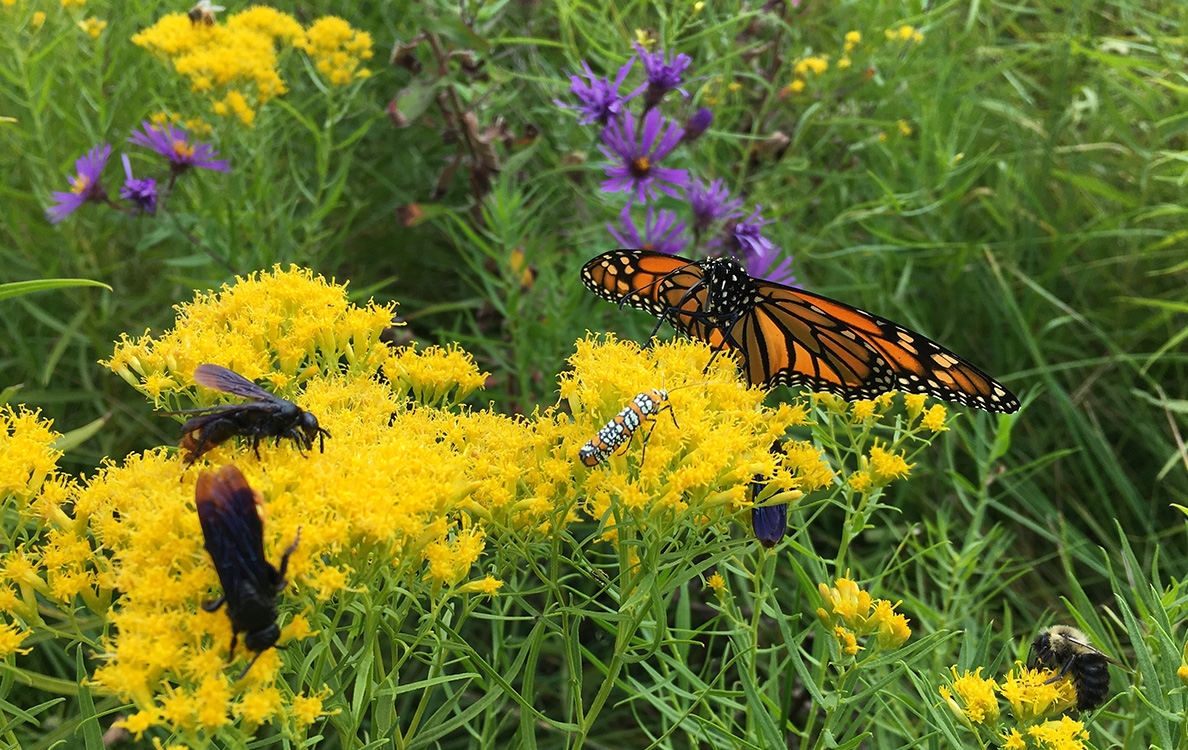
Here at our 5-Boro Green Roof, pollinators and the monarch butterfly are enjoying feasting on goldenrod flowers in the garden bed which also includes aster flowers that sweat bees love. The 5-Boro Green Roof is a model for sustainable design and a living example of climate action, and is just one of the places where we study and support pollinators.
How NYC Parks Supports Pollinators
NYC Parks conserves and manages natural areas to provide high-quality habitat for a diversity of pollinators by:
Removing Introduced Plants and Growing Native Species
NYC Parks restores hundreds of acres of degraded habitat by removing overabundant introduced species and planting locally-adapted native plant species that have co-evolved with our pollinators to provide a variety of food sources throughout the growing season.
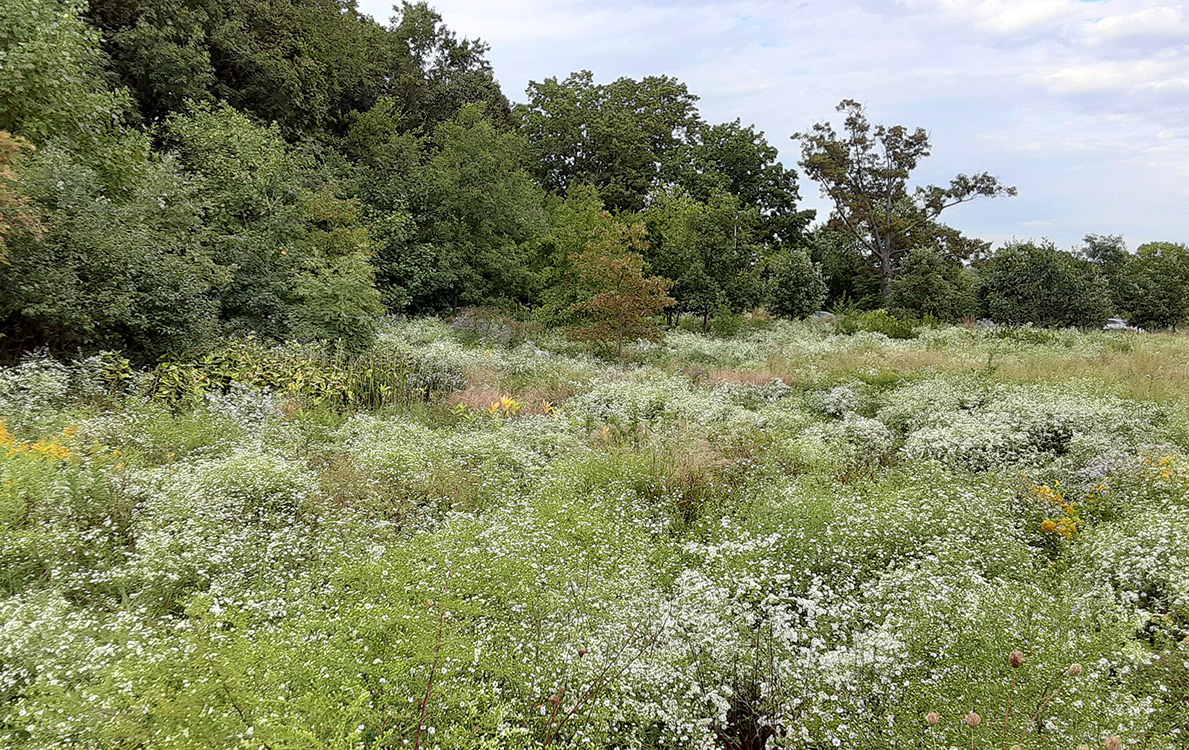
Supported by the Stewardship Program and Citywide Nursery, local volunteers founded the Oakland Wildflower Meadow Project in Alley Pond Park. Over the years, this group planted one acre of open grassland with over 1,000 native wildflowers to restore a piece of this important and colorful ecosystem.
Introducing Pollinator Places
NYC Parks has also developed the Pollinator Place garden initiative to design gardens as havens for pollinators.
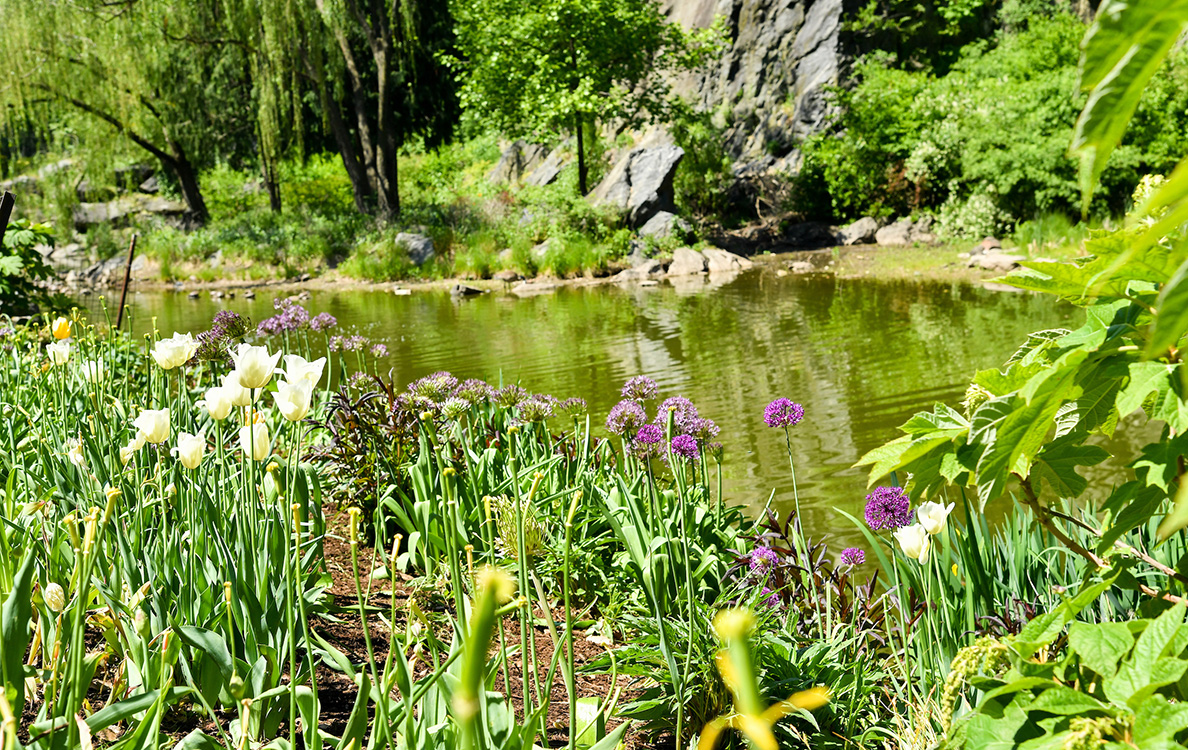
These gardens primarily use native plants that are aesthetically pleasing and provide ecosystem benefits to pollinators and other insects and birds in our parks. Learn more about our Pollinator Places
Advocating for Growing Native Plants
In recognition of the critical role that native plants play in keeping our ecosystems diverse and providing healthy habitat, the City Council passed Local Law 11 of 2013. This law aims to decrease the presence of monocultures of introduced species in favor of native plants throughout the landscapes of New York City, big and small. It also requires that NYC Parks plant only native species in natural areas.
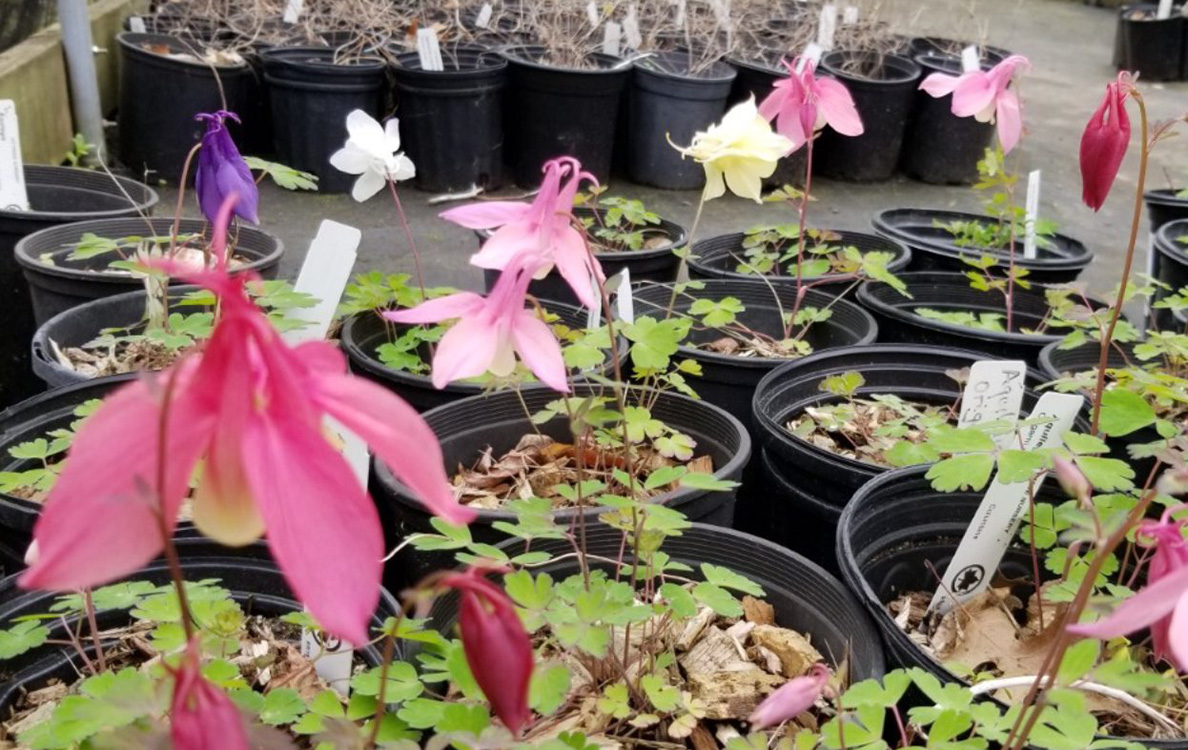
In 2020, we planted 57,143 native plants in our natural areas, including columbine plants which bumble bees love.
How to Support Pollinators
Tips for Supporting Pollinators
in Your Garden
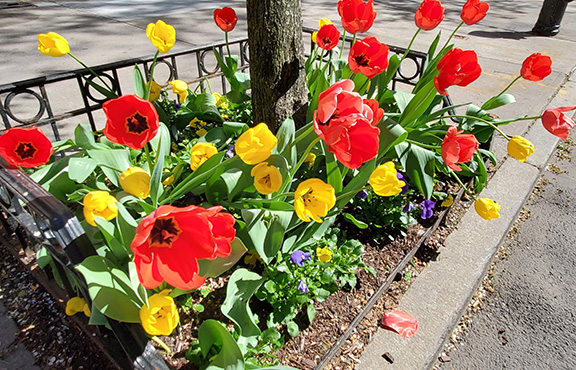
Learn how you can grow green spaces where pollinators can thrive — in your yard, community garden, or street tree bed! Learn more
Volunteer at an NYC Parks Stewardship Event
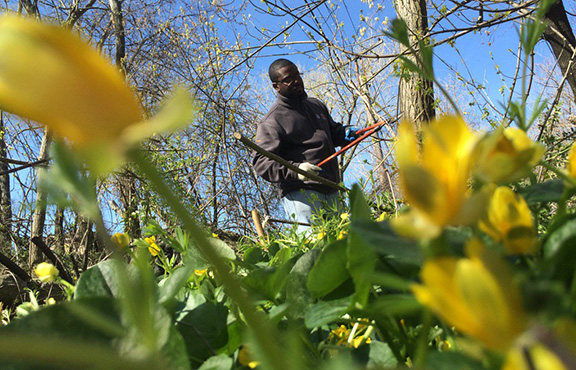
Help remove overabundant introduced plants at your local park to restore habitat for native pollinators.
Learn more
Ready to Go Exploring?
Visit our Pollinator Places for a chance to see bees, butterflies, wasps, and more in action and the work we're doing to support pollinators suffering from habitat loss.

